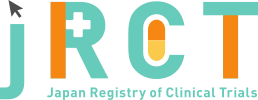臨床研究等提出・公開システム
|
Sept. 30, 2024 |
|
|
Sept. 30, 2024 |
|
|
jRCT1021240027 |
Analysis of reactive astrogliosis in multiple sclerosis using [18F]SMBT-1 |
|
Analysis of pathophysiology in multiple sclerosis using new PET tracer |
Hiraoka Kotaro |
||
Research Center for Accelerator and Radioisotope Science (RARIS), Tohoku University |
||
6-3, Aoba, Aramaki, Aoba-ku, Sendai, 980-8578, JAPAN |
||
+81-22-795-7802 |
||
kotaro.hiraoka.e5@tohoku.ac.jp |
||
Hiraoka Kotaro |
||
Research Center for Accelerator and Radioisotope Science (RARIS), Tohoku University |
||
6-3, Aoba, Aramaki, Aoba-ku, Sendai, 980-8578, JAPAN |
||
+81-22-795-7802 |
||
kotaro.hiraoka.e5@tohoku.ac.jp |
Pending |
Sept. 30, 2024 |
||
| 60 | ||
Interventional |
||
non-randomized controlled trial |
||
open(masking not used) |
||
uncontrolled control |
||
parallel assignment |
||
diagnostic purpose |
||
Multiple Sclerosis Group: |
||
Multiple Sclerosis Group: |
||
| 18age old over | ||
| 60age old under | ||
Both |
||
Multiple sclerosis |
||
PET scanning using [18F]SMBT-1 |
||
The primary outcome measure involves determining the brain uptake value after [18F]SMBT-1 administration as Standardized Uptake Value (SUV) and SUV ratio (SUVR). |
||
| Mitsubishi Tanabe Pharma Corporation | |
| Not applicable |
| the Ministry of Education, Culture, Sports, Science and Technology | |
| Not applicable |
| Tohoku University Hospital Clinical Research Ethics Committee | |
| 1-1, Seiryo, Aoba-ku, Sendai, Miyagi, Miyagi | |
+81-22-728-4105 |
|
| ec@rinri.hosp.tohoku.ac.jp | |
| Approval | |
Mar. 29, 2024 |
Yes |
|
none |
